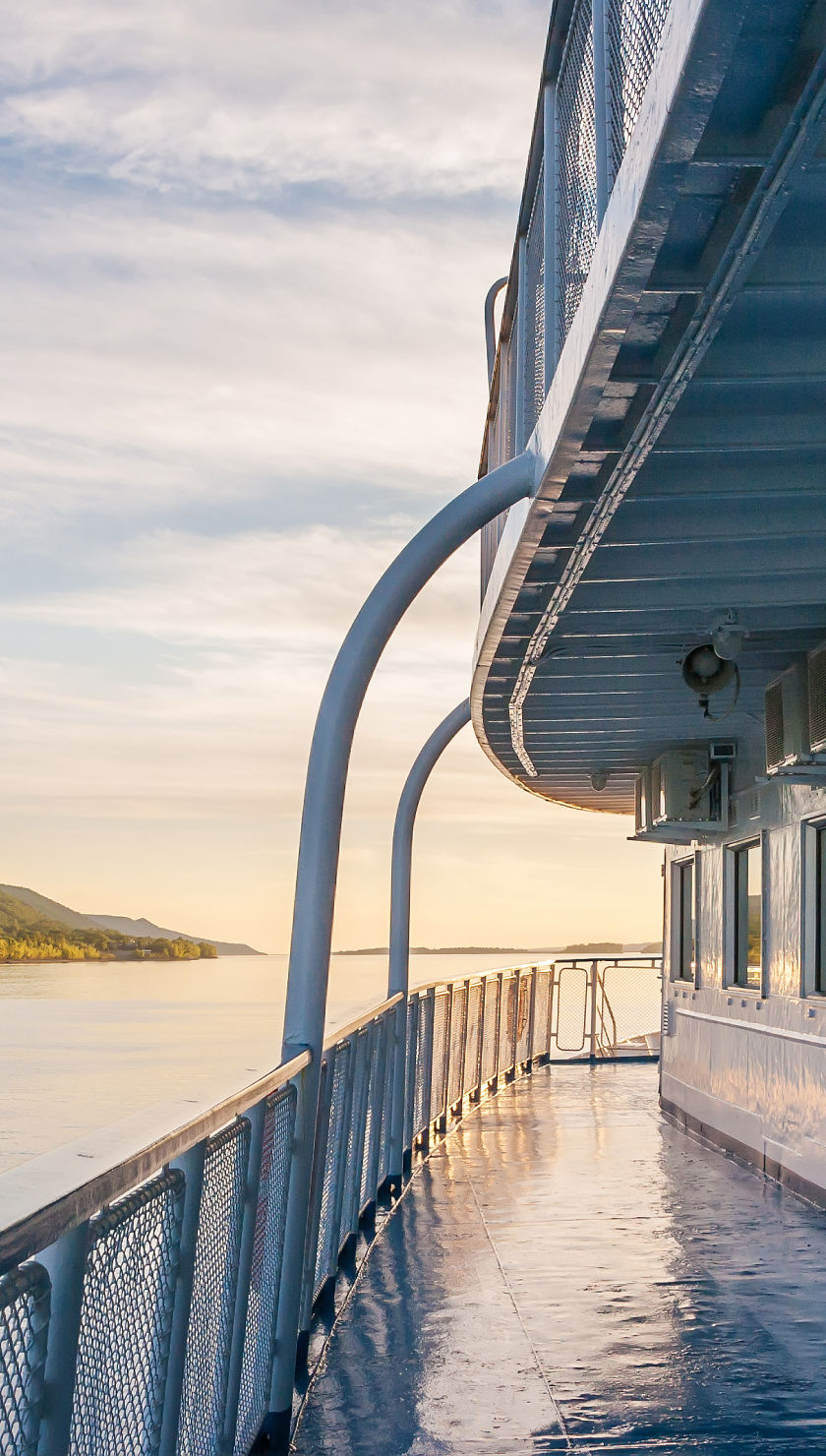古代を航海する:エジプトのナイル川の冒険
ナイル川の穏やかな流れに身を任せ、エジプトで最も魅惑的な目的地への旅に出よう。人気のナイル川の旅程では、注目すべき寺院や墓、文化的な体験の数々が紹介され、それぞれがこの歴史的な川のユニークな一面を見せてくれる。
古代の神々と王たちの響き
ナイル・クルーズは、古代テーベの野外博物館のような街、ルクソールで始まり、ルクソールで終わることが多い。ルクソールはナイル川によって、活気ある都市生活と壮麗な寺院がある東岸と、ファラオや貴族が眠る広大なネクロポリスである西岸に分かれている。東岸にあるカルナック神殿群は、聖域、パイロン、オベリスクの迷宮で、何世紀にもわたる宗教的献身を象徴している。ルクソール神殿は、エレガントな柱廊と複雑な彫刻が施され、川沿いに威風堂々と建っている。ナイル川を渡った西岸には、ツタンカーメンをはじめとするファラオの墓が砂漠の丘にひっそりと眠る王家の谷がある。古代建築の傑作であるハトシェプスト神殿は、砂漠の底からドラマチックにそびえ立ち、エジプトの強力な女性ファラオの証となっている。メムノンの巨像は、ファラオ・アメンヘテプ3世の2つの巨大な石像で、かつて壮大な霊廟があった名残で、平原の向こう側を静かに見つめている。ルクソールを体験することは、ファラオ時代のエジプトの黄金時代に足を踏み入れることだ。
+ ハイライト見どころ:カルナック神殿群、ルクソール神殿、王家の谷、ハトシェプスト神殿、メムノンの巨像など。
ヌビア文化と島の秘宝
ほとんどのナイル・クルーズで最南端に位置するアスワンは、エジプトを違った角度から見ることができる。ここでは、ナイル川がドラマチックな花崗岩の崖や島々の間を流れ、驚くほど美しい風景を作り出している。近代工学の驚異であるアスワンハイダムは、川の流れを形成し、世界最大級の人工湖であるナセル湖を作り出した。ダムを訪れると、エジプトの近代的な発展とナイル川との継続的な関係について洞察することができる。近くには、女神イシスに捧げられたフィラエ神殿が川の中の島に建っており、その優美な建築は古代エジプトの宗教美を反映している。フィラエへの船旅は幻想的な体験で、特に夕暮れ時には神殿が黄金の光に包まれる。古代の花崗岩の採石場に横たわる未完成のオベリスクは、古代エジプト人が記念碑的な建造物を作るために使った技術を垣間見ることができる。アスワンはまた、独特の伝統、音楽、工芸を持つヌビア文化の玄関口でもある。ヌビア人の村を訪れれば、何世紀にもわたってナイル川沿いで繁栄してきたこの独特の遺産を垣間見ることができる。
+ ハイライトハイライト:アスワンハイダム、フィラエ神殿、未完成オベリスク、ヌビア人の村(すべてアスワン地域
ホルスとソベクの神殿
ルクソールからアスワンにかけてのナイル川沿いには、小さな町や遺跡が点在し、それぞれに独特の魅力がある。エドフには、エジプトで最も保存状態の良い神殿のひとつであるホルス神殿があり、そびえ立つ鉄塔や複雑な彫刻が見られる。ホルスとソベクの2神を祀るコムオンボ神殿は、ナイル川の湾曲部にドラマチックに建ち、見事な川の眺めを楽しめる。クヌム神を祀るエスナ神殿は、近代的な町の地下にある穴の中にあり、幾重にも重なる歴史を物語っている。各遺跡はナイルクルーズの豊かさを増し、古代エジプトの宗教、芸術、建築をより深く理解させてくれる。
+ ハイライトエドフのホルス神殿、コムオンボ神殿、エスナ神殿
あなたの旅にぴったりのナイル川クルーズを見つける
ナイル川には、ルクソール周辺を巡る短いクルーズから、エジプト南部を深く掘り下げる長いクルーズまで、さまざまなオプションがある。ここでは、人気のナイル川クルーズ・ルートをいくつかご紹介しよう。
ショート・ナイル・エスケープで忘れられない出会いを(3~4日間)
- ルクソール周遊:これらのクルーズは古代テーベの中心部に焦点を当て、ルクソールの東岸と西岸を深く探索する。主要な神殿や墳墓など、ファラオ時代の歴史を集中的に学ぶことができる。ルクソールの見どころを体験したい、時間が限られている方に最適なオプションだ。
- アスワン周遊クルーズ:ナイル川南部に焦点を当て、アスワンのユニークな景観とヌビア文化を探訪する。フィラエ神殿、ハイダム、ヌビアの村などを訪れることが多い。エジプト南部の静かでゆったりとしたペースを体験したい人には理想的だ。
象徴的な寺院と古代の神秘を巡るクラシック・ナイル・アドベンチャー(5~7日間)
- ルクソールからアスワンへ:ルクソールからアスワンを結び、エドフとコムオンボに立ち寄る、ナイルクルーズの定番コースだ。主要な遺跡を網羅し、エジプト北部と南部をバランスよく体験できる。初めてナイルクルーズの旅をする人に最も人気のあるコースだ。
- デンデラとアビドスのエクステンション:ハトホル神殿があるデンデラと、古代エジプトで最も重要な宗教的中心地のひとつであるアビドスを訪れる長めの旅程もある。これらの遺跡では、エジプトの宗教や神話をより深く知ることができ、主要な観光地よりも混雑していない。
エジプト古代への包括的な旅(8日間以上)
- カイロからアスワンまで:最も大規模なナイル・クルーズで、ギザのピラミッドやカイロのエジプト博物館など、さらに北にある遺跡の訪問も含まれることが多い。ナイル渓谷と首都を組み合わせた、完全なエジプト体験を提供する。これらのクルーズは、エジプトの歴史と文化に最も深く触れることができる。
- ナセル湖クルーズ:アスワン・ハイ・ダムによって作られた広大な貯水池、ナセル湖のクルーズは実にユニークな体験だ。これらのクルーズでは、湖が埋まる前に移築された人里離れた寺院や遺跡を探索する。冒険気分を味わいながら、エジプトの古代を違った角度から見ることができる。
ナイル川での特別な体験
- エジプトのピラミッドこの旅程では通常、豪華なリバー・クルージングと象徴的なランドマークの詳細な探索が融合している。荘厳なギザのピラミッドや謎めいたスフィンクスを目の当たりにし、王家の谷に分け入り、カルナックやルクソールのような神殿の壮大さに驚嘆する。専門のエジプト学者によるガイドツアーでは、ファラオの生活、ヒエログリフの謎、古代エジプト文明の素晴らしさについての洞察を得ることができる。
古代神殿に響き渡るファラオの囁きや、ナイル川に沈む太陽との別れを目の当たりにし、悠久の美に浸る。ナイル川クルーズは歴史の旅であり、川そのもののように永遠に流れる思い出を作る。












